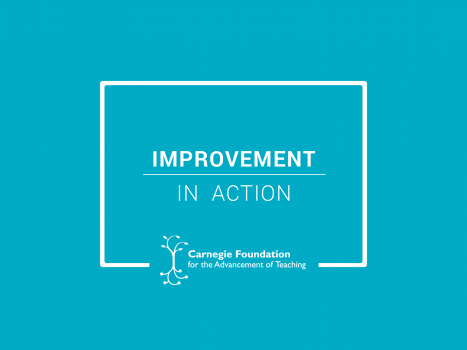New impact studies show that college students enrolled in Statway® and Quantway® — two accelerated developmental math programs in the Carnegie Math Pathways™ initiative — transfer from two-year to four-year colleges at higher rates, 43-to-46 percent, than all community college students nationwide, whose transfer rate is 32 percent. These differences are especially remarkable in that Pathways courses service students with weak academic backgrounds when they enter community college. In the past, these students would be less likely than other students to succeed, but with Pathways courses they are now considerably more successful than even the average community college student.
“These students are no longer denied an opportunity for a better life,” said Karon Klipple, executive director of Carnegie Math Pathways, adding that these gains are across the board for students of all ethnic and racial backgrounds, as well as both male and female students.
Nationally, about 60 percent of first-time community college freshmen are assigned to developmental math each year because they’re not prepared for college-level work. Only 20 percent of these students successfully complete their remedial requirements and a college-level math class within three years, according to the Community College Research Center. The thousands of students who don’t make it through a college math class are shut out of earning associate degrees, transferring to four-year colleges, or enrolling in many specialized certification programs.
To address this problem, Carnegie Foundation assembled a group of college math instructors, academic researchers, and administrators into a Networked Improvement Community, or NIC. Their work — described in a profile earlier this year — was guided by the six core principles of improvement, an evidence-based, user-focused process, to design Pathways. The work is ongoing as the network continues to iterate and test new improvements in teaching developmental math.
Among Statway students, 43 percent transfer from community college to four-year institutions within five years. By comparison, 32 percent of all community colleges nationwide transfer to four-year institutions within six years.
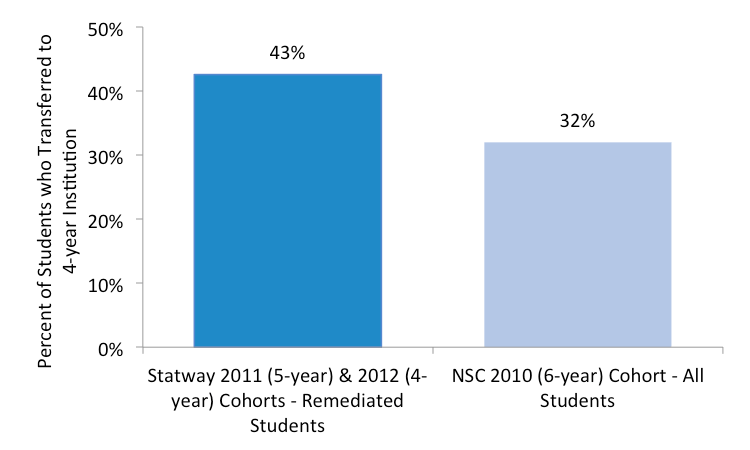
Students in Quantway 1 transfer from community college to four-institutions at a rate of 46 percent within five years, compared to 32 percent of all community college students nationwide who transfer to four-year institutions within six years.
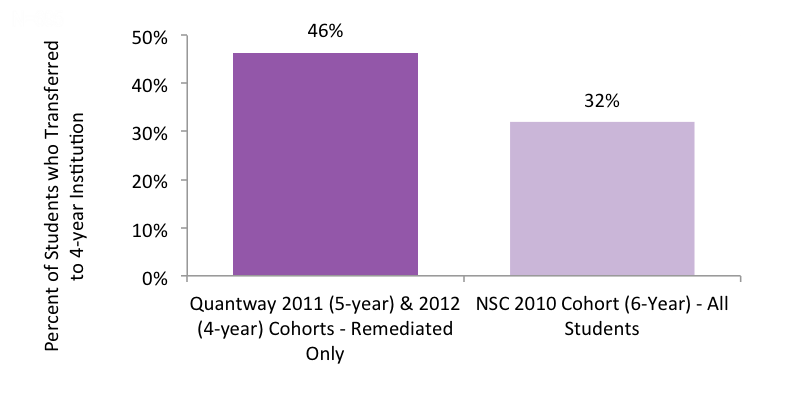
Additionally, Statway and Quantway students have triple and double the success rates in completing college-level math credit and developmental math sequences, respectively, and do so in half the time. These rates have held even as program enrollment has quadrupled since being launched five years ago.
The key differences between the Statway and Quantway programs and traditional developmental math courses are the length of the programs, the curriculum materials, and teaching methods. Instead of being placed two or more levels below college math, as are most developmental math students, Statway students complete the developmental and college-level math in two consecutive terms (semesters or quarters), while Quantway students are eligible to enroll in college-level math after one term.
“I always thought that intensive teaching can work because what intensive teaching has is the benefit of immersing people in something,” said John Kellermeier, a retired mathematics instructor at Tacoma Community College in Washington, and one of the original 29 schools that participated in the Statway pilot program.
In the 2015-2016 academic year, 50 percent of Statway students successfully completed college-level math for credit in a single year, compared to 16 percent of students in traditional developmental math who earned college math credit within two years.
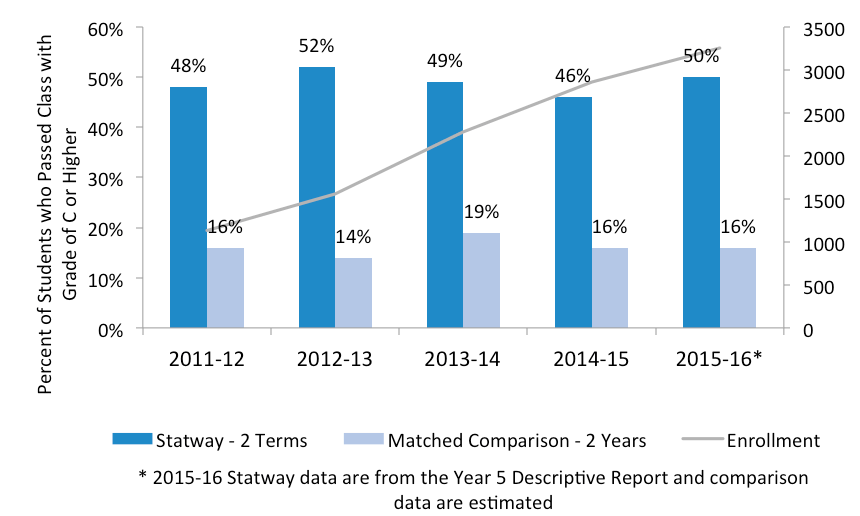
Among students in Quantway 1, 64 percent successfully complete their developmental math coursework in one term (semester or quarter), while only 37 percent of their peers in a traditional developmental math sequence succeed after an entire academic year.
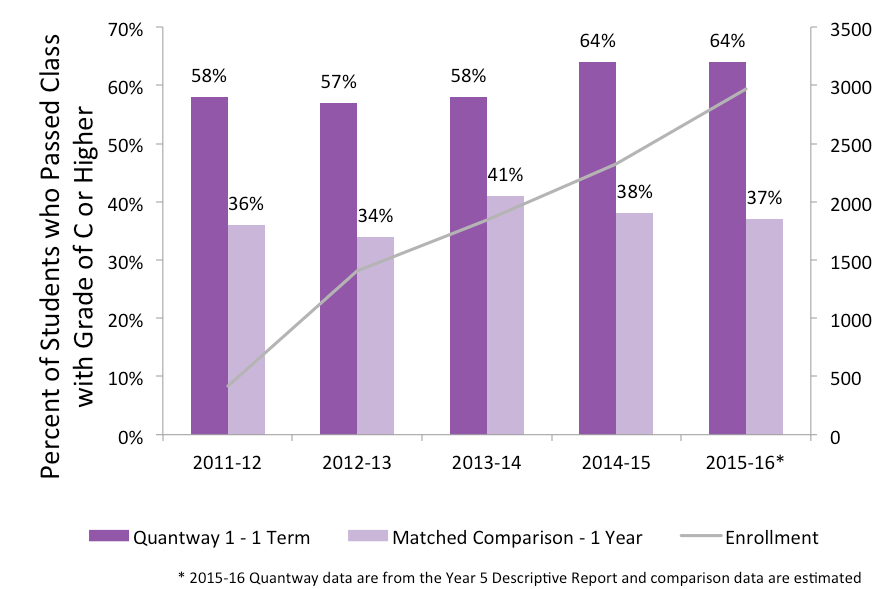
When Rockland Community College implemented Quantway in 2013, many students were repeating developmental math “three, four, five, and six times,” said Kristopher M. Baker, then chair of the division of math, natural and health sciences at the State University of New York (SUNY) campus, located 25 miles northwest of New York City. After the first year, he said, the success rate increased by nearly 40 percent.
Nancy L. Zimpher, chancellor of the SUNY system, which enrolls about 403,000 undergraduates, called the results “promising” and secured funding to help any SUNY campus implement Statway or Quantway. SUNY also holds faculty trainings for the programs twice a year. “We are proud to be an ongoing partner to change the success rate for students that come to college unprepared,” Zimpher said. “This is just the beginning for SUNY, as we look to roll out Quantway and Statway to support more than 20,000 students at our campuses across the state in the next few years.”
March 15, 2017
The implementation science approach to improvement in education centers on how to accommodate local school variables and other contextual factors that can impede successful implementation of change ideas, by creating teams that include external facilitators and specialists.
April 20, 2017
Everyone has a stake and a say in the Lean approach to improving educational achievement. The school improvement model evolved from Toyota’s philosophy of building a culture in which all employees were empowered and expected to be part of providing the best possible product.





